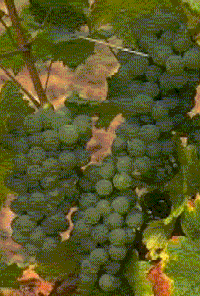Copyright
DKOP L.L.C.
© 1999-2016
• All rights reserved.*
..
|
Sauvignon
Blanc The Sauvignon Blanc grape produces wines of distinction in most of the areas where it is grown. It can tolerate greater heat than many varieties. Sauvignon Blancs are higher in acid and often exhibit 'melon' in the nose and tastes. If grown in too cool a climate, it can develop an herbal ('grassy') character in its aromas. Sauvignon Blanc produces large crops and is a low cost variety. It performs well in the Loire river and Bordeaux regions of France. Because it can get overpowered by the oak flavors, it is not often aged in wood. It can gain additional complexity and richness with that treatment. In the U.S. it is often known as Fume Blanc. New Zealand is having notable success with this variety and produces wines that have very high levels of acidity. Sauvignon Blanc is often blended with small amounts of Semillion in order to 'round-out' the taste of the wine. Sauvignon Blanc is especially good when served with seafood.
|
